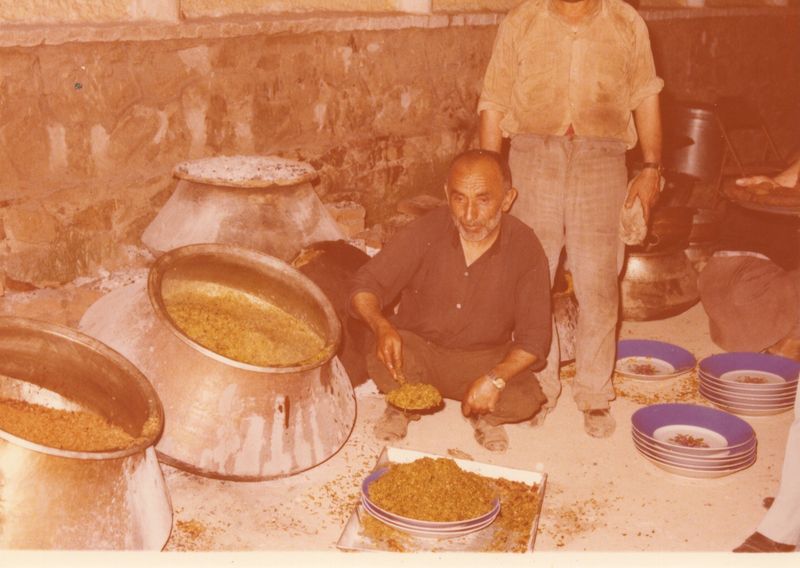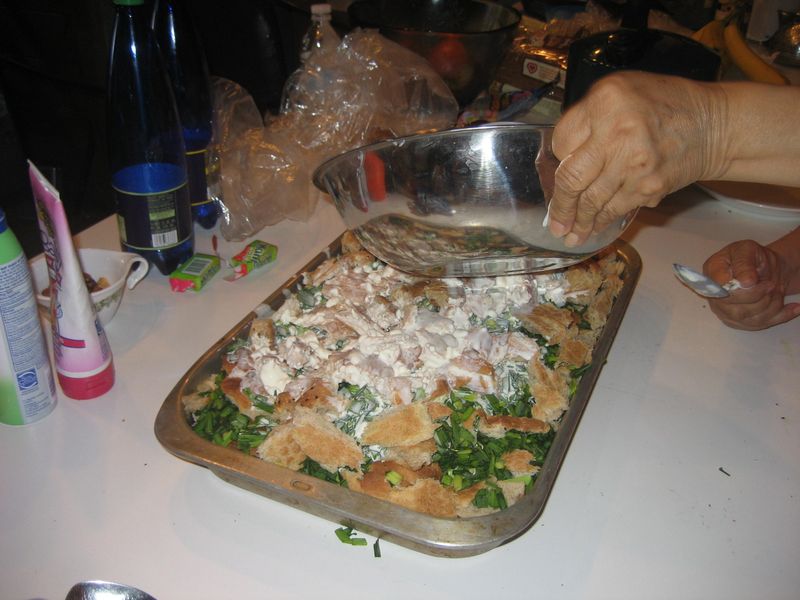By Humaira
The Ghilzai family’s annual Lake Tahoe vacation revolves around food. We seem to all have a genetic fear of being underfed and pack the house with more groceries than could possibly be consumed in a week. When my siblings and I cook, it’s usually Western foods on the menu: summery pastas, barbecue, burritos, and so on. But the highlight of the week is hands down the Afghan meals my mom, Jeja, cooks.
Jeja hauls her big pots from home, along with onions, rice, meat and spices from her favorite Bay Area Afghan markets. She doesn't trust us to buy the proper ingredients. The meals she prepares tend to be complicated for vacation cooking, and are often heavier than one would normally eat after a day in the hot sun. BUT, we all love these meals despite the fact that we feel a little portly in our bathing suits the next day.
This year she broke the mold and made Qurooti, a sort of savory Afghan bread pudding. In Afghanistan this is a poor man's dish since bread is inexpensive and Qurooti is a delicious way to use up stale bread. The dish gets its name from its most important ingredient: quroot. Quroot is a small ball of salted, condensed yogurt that has been dried in the sun, probably developed to preserve yogurt when there was no refrigeration. I loved quroot as a child. To this day whenever I see a candy jaw breaker it reminds me of the quroot that my brother Tamim and I would gnaw on for hours at a time.
When incorporated into a cooked dish, quroot is first made into a paste. Growing up our cook would soak several pounds of quroot in warm water and then rub the softened quroot against the inside of a clay bowl. The end result was a very thick paste with an intense salty and sour taste used in a number of different dishes.
In the Qurooti below we’ve substituted Greek yogurt for quroot since it is hard to find in the U.S. We’ve also made it “Kabul style” by adding kofta, seasoned ground meat, to the dish. In Afghanistan this dish would typically be vegetarian since for most Afghans meat is a luxury.
Jeja put up a big fight when she realized that her photo was going to be featured on our blog. I informed her that she is the star of afghancooking.net and it took a lot of pleading to get her permission to use her name and photos from here on.
"Qurooti": Savory Afghan Bread Pudding
1 small yellow onion, finely chopped
1 tbsp. olive oil
2 cloves garlic, minced
1 lb. ground beef (or ground turkey)
1 ½ tsp. ground coriander
1 1/2 tsp. paprika
1 tsp. plus 1 tbsp. Kosher salt
½ tsp. ground black pepper
1 tbsp. tomato paste
1 loaf Afghan flat bread
1 lb. leeks, white and light green parts, finely chopped
2 cups Greek yogurt
1 cup warm water
1/2 cup roughly chopped walnuts (optional)
1 tbsp. dried or 3 tbsp. fresh chopped mint
Preheat oven to 400 degrees.
Saute the onion in olive oil in a medium-size frying pan on low heat until tender and translucent. Add the garlic and sauté another 2 minutes. Add the ground beef and use a spoon to break it up as it cooks so it is loose and separated (like taco meat). Once the beef is browned add the coriander, paprika, 1 tsp. of the salt, pepper and tomato paste. Mix everything well and continue to cook over low heat for about 15 minutes.
You will only use about ¾ of the Afghan bread. Save the other ¼ loaf for another use. Tear the ¾ loaf into large bite-size pieces and arrange half of it along the bottom of a 9x13 baking dish. Distribute the chopped leeks over the bread and sprinkle with the remaining 1 tbsp. of salt. Arrange the remaining bread on top of the leeks.
In a large bowl mix together the yogurt and water until it is smooth with no lumps. The mixture should be pourable, like a thin milk shake. Adjust the amount of water as necessary to reach the desired consistency.
Pour the yogurt mixture over the bread, covering all surfaces and sides, pressing the bread down gently with your fingers to soak in the yogurt. Spread the cooked meat over the top. If you are using walnuts spread them on top of the meat. Bake for 30 minutes.
Remove from the oven and sprinkle with the mint. Scoop onto serving plates along with a simple crunchy salad.











